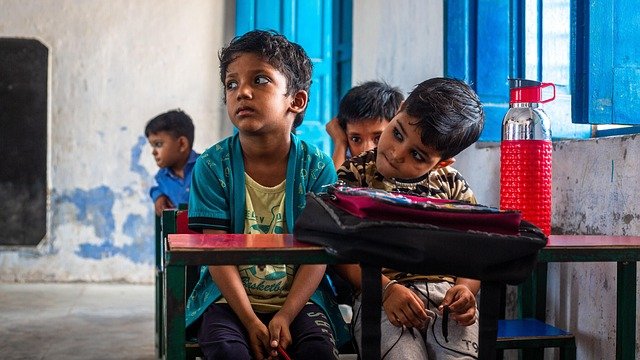“When screens replace swings, the price we pay is our children’s health.” 🎮📉🛝
🚨 Introduction: The Hidden Crisis in Plain Sight
Today’s childhood looks vastly different than just a generation ago. Kids in England are spending more time indoors, less time moving, and far more time in front of screens. From toddlers tapping tablets to teens immersed in social media, the average child now spends over 6 hours daily on screens — often at the cost of physical activity. 📱
According to NHS Digital and Public Health England, this shift toward a sedentary lifestyle is leading to rising rates of:
- Obesity 🚨
- Type 2 diabetes 🍩
- Poor mental health 😔
- Delayed motor development 🧠
- Sleep issues 😴
Let’s explore the true cost of reduced playtime — and how we can turn things around. 🛑➡️🟢
📉 The Decline in Active Play: What’s Going On?
📊 Shocking Stats:
- Less than 45% of children in England meet the recommended 60 minutes of physical activity per day.
- Over 1 in 3 children aged 10–11 are overweight or obese.
- 91% of UK children aged 2–4 exceed the screen time limit recommended by health experts (1 hour/day).
- Children from lower-income areas are twice as likely to have fewer safe spaces for physical play. ⚠️
Why the shift?
- 📺 Screen addiction (TV, gaming, smartphones)
- 🏙️ Urbanization with fewer parks/playgrounds
- 🚗 Safety concerns keep kids indoors
- 🏫 Academic pressure and homework loads
- 👩💻 Tech-focused lifestyle replacing outdoor games
🔁 This creates a vicious cycle: More screen time → Less movement → More health problems → More screen dependence.
🧠 Why Physical Play is Crucial for Healthy Development
Children are not just mini-adults — they need physical activity not just for health, but to develop neurological, emotional, and social skills. Play is how kids learn, cope, and grow.
✅ Physical Benefits:
- Strengthens bones and muscles 🦴
- Regulates weight and reduces fat 🏃
- Boosts immune function 🛡️
- Enhances coordination and motor skills
✅ Mental & Emotional Benefits:
- Reduces stress and anxiety 😌
- Increases confidence and independence 🌟
- Improves focus, memory, and classroom performance 📚
- Encourages creativity and problem-solving 🧠
✅ Social Benefits:
- Promotes teamwork and communication 🤝
- Builds conflict resolution and empathy ❤️
- Helps form lasting friendships 🤗
💡 Play isn’t just a break from learning — it’s how children learn best.
🔍 Health Consequences of a Sedentary Lifestyle
⚠️ Physical Risks:
- Obesity & metabolic syndrome – excess calories and reduced movement lead to weight gain, especially dangerous at young ages.
- Poor cardiovascular health – inactive kids often show early signs of heart disease (e.g., high cholesterol).
- Insulin resistance – a precursor to type 2 diabetes, now rising even among 10-year-olds.
- Weak muscle and bone growth – especially when children lack high-impact, weight-bearing activities like running and jumping.
- Postural problems – prolonged sitting causes neck, shoulder, and back pain.
😔 Psychological & Behavioral Effects:
- Increased irritability and mood swings
- Sleep disturbances, especially from night-time screen use
- Lower self-esteem and feelings of isolation
- Higher risk of depression and anxiety — as early as age 7
📱 The Role of Screens: Useful Tool or Health Hazard?
It’s unrealistic to eliminate screens in modern life — they’re part of how kids learn and socialize. But excessive screen time, especially unmonitored, is a serious problem.
🚫 Negative Impacts of Too Much Screen Time:
- Reduces opportunities for active play and outdoor time
- Leads to mindless snacking and overeating 🍿
- Decreases eye health (digital eye strain, blurry vision)
- Delays speech and communication skills in young children
- Increases aggressive behavior (especially with violent gaming)
🧠 Balance is key. Parents should be aware of how, when, and why their children use screens — and provide healthy alternatives.
🏙️ Environmental & Social Barriers to Active Childhood
Children in England face several environmental limitations that reduce physical play:
🔒 Safety Concerns:
- Traffic congestion 🚗
- Stranger danger fears 😟
- Crime in some neighborhoods
🏘️ Urban Limitations:
- Overcrowded housing with no outdoor space
- Fewer accessible parks or affordable sports programs
- Lack of communal green spaces in inner-city areas
💼 Family Dynamics:
- Busy or working parents unable to supervise play
- Financial strain limiting participation in extracurriculars
- Household screen habits shaping children’s routines
These factors combine to limit free movement and isolate children indoors, especially in low-income areas.
🛠️ What We Can Do: Solutions for Parents, Schools & Communities
Reversing this trend requires action at all levels — from families to policymakers.
👨👩👧👦 For Parents:
- Set a daily screen-free hour for active play ⏳
- Encourage walking to school or shops when safe 🚶
- Introduce weekend nature trips or garden games 🌳
- Promote creative play: dancing, scavenger hunts, obstacle courses
- Lead by example — move with your kids!
🏫 For Schools:
- Mandate at least 2+ PE sessions per week
- Add movement breaks during lessons (e.g., stretch sessions)
- Offer active after-school clubs (dance, football, yoga)
- Teach students the importance of physical and mental wellness
🏙️ For Communities & Policy Leaders:
- Build safe, inclusive, well-lit parks 🛝
- Create free sports initiatives for low-income families
- Provide secure bike paths and walking trails 🚴
- Launch public awareness campaigns about movement and screen health
🌟 Final Thoughts: Bringing Back the Joy of Movement
Children in England deserve more than screen time and cramped rooms. They deserve fresh air, friendships, freedom to run, climb, and explore. Reducing sedentary habits isn’t about taking away devices — it’s about giving kids back their right to play.
🏃♀️ Movement is medicine.
🎨 Play is education.
❤️ Activity is happiness.
We have a duty to protect the mental, physical, and emotional health of the next generation — and that starts with bringing play back into their daily lives.
📌 Quick Action List for Parents
✅ Limit screen time to 1–2 hours per day
✅ Encourage outdoor play after school
✅ Schedule family movement time (walk, ride, stretch)
✅ Choose gifts that inspire activity (bikes, balls, skipping ropes)
✅ Talk to your child’s school about promoting active learning






